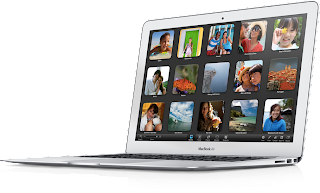For quite some time I've watched a student using an external monitor together with his MacBook Pro 13 inch. I thought to myself, that looks interesting... So I hooked up my MacBook Pro with a HD TV and found out that OS X Mountain Lion is very bad at multiple display.
When Apple introducing new multiple display done right in OS X Mavericks, I was very delighted. After a long thought, I've decided to make a dual screen setup for my office. I don't think it is crucial for my work, but sometimes I do feel that it might help a little bit.
I've decided to get two external monitors instead of one. This is because I feel a little bit awkward looking back and forth between retina and non-retina display. It will be like... beautiful - ugly - beautiful - ugly... It would also makes my eyes tired of focusing back and forth (because the MacBook Pro is near and the external display needs to be further away to look beautiful)
With two external displays setup, I could clam shell my MacBook Pro and use those two external displays. No more problem with beauty and the beast, and no more problem with focusing far and near.
In order to use my MacBook Pro in clam shell mode, I have to get a keyboard and a mouse or a trackpad. So I bought a Logitech K750 keyboard because am attracted with its solar charging ability. I hope there is no need for me to change its battery in the future. The setback, it would use up one USB port (which I only have two at my disposal).
Then I bought Apple trackpad because I've been accustomed with the trackpad on the MacBook Pro. Another reason I don't opt for an Apple mouse is because it uses a lot of battery, and it's touch functions feel a little bit unpolished.
Finished with the trackpad and keyboard. Now I look up for the monitors. Only to find out that it is quite expensive. Errkkk... I halted my plan for a month and rethink. However, I decided to buy them after all. Bought two of the cheapest 24 inch with HDMI. They are BenQ 2460.
Finally, what I need is a simple gadget to hold my MacBook Pro in clam shell mode. Browsed the net and it would cost me another USD50. Well, I don't want to waste that kind of money just for a holder, so I bought a set of book ends, taped it together and there I got my DIY MacBook Pro stand. It saved me USD40+.
So here is my setup.
Very happy with all the purchase and setup. Although it is not a dual Apple Thunderbolt display that I secretly wanted, the setup is sufficient. Now I can fully utilise the OS X Mavericks multiple screen function and be happy with it. Setbacks? Probable setback would be it consumes a lot of space. I guess you can't have it all.
Final note. There is still room for a Mac Pro behind the dual display.
Finally, what I need is a simple gadget to hold my MacBook Pro in clam shell mode. Browsed the net and it would cost me another USD50. Well, I don't want to waste that kind of money just for a holder, so I bought a set of book ends, taped it together and there I got my DIY MacBook Pro stand. It saved me USD40+.
So here is my setup.
Very happy with all the purchase and setup. Although it is not a dual Apple Thunderbolt display that I secretly wanted, the setup is sufficient. Now I can fully utilise the OS X Mavericks multiple screen function and be happy with it. Setbacks? Probable setback would be it consumes a lot of space. I guess you can't have it all.
Final note. There is still room for a Mac Pro behind the dual display.


























